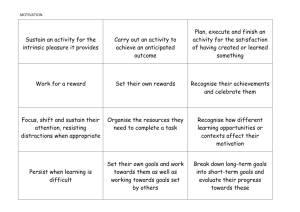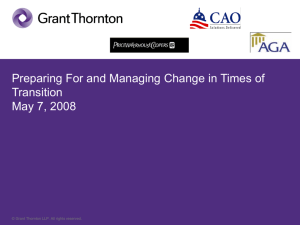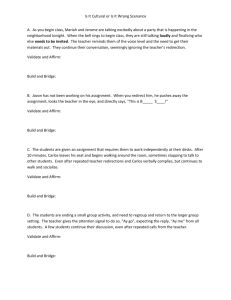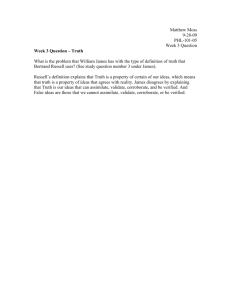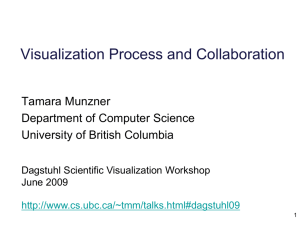Problem Solving
advertisement
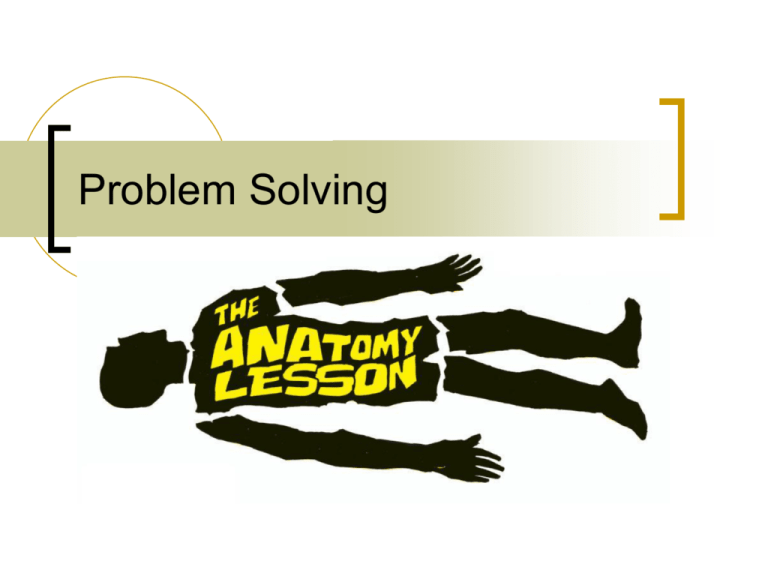
Problem Solving What is Problem Solving? “higher-order cognitive process that requires the modulation and control of more routine or fundamental skills” (Goldstein & Levin, 1987) Why is it hard? Intransparency (lack of clarity of the situation) Polytely (multiple goals) inexpressiveness opposition transience Complexity (large numbers of items, interrelations, and decisions) commencement opacity continuation opacity enumerability connectivity (hierarchy relation, communication relation, allocation relation) heterogeneity Dynamics (time considerations) temporal constraints temporal sensitivity phase effects dynamic unpredictability Problem Cycle Problem Evaluation Problem Recognition Problem Observation Sustain Solution Problem Analysis Validate Solution Develop Solution Problem Cycle Problem Recognition – Define the problem Problem Observation – Clarify the current situation Problem Analysis – Thoroughly analyse all data Develop Solution – Design a plan of action Validation Solution – Analyze the results Sustain Solution – Maintenance Problem Evaluation – Evaluation and Follow up Problem Cycle Problem Evaluation Problem Recognition Problem Observation Sustain Solution Problem Analysis Validate Solution Develop Solution Problem Recognition Define the problem clearly Ask the following questions What is our objective? Why are we here? What is the impact? Problem Recognition It is vital to assess the impact that the problem is having on your environment Assess the sense of urgency this problem justifies What skills are needed to solve this problem? Has this problem been solved before? LOOK BEFORE YOU LEAP Problem Recognition Describe or define the problem Identify the specific symptoms associated with the problem You may need to conduct an investigation You may have to study and learn about the system or process that is at fault, and know how it should be working Problem Recognition You may need to draw a picture Problem Cycle Problem Evaluation Problem Recognition Problem Observation Sustain Solution Problem Analysis Validate Solution Develop Solution Problem Observation Consider all the available information Event logs Historical Timeline System Failure timeline Eye-witness accounts Visual Inspection Smells ? Sounds ? Problem Observation What is the frequency of failure? Constant Failure: easy to identify problem, probably a major component Intermittent Failure: Harder to categorise, difficult to predict and hard to solve Conditional Failure: It is possible to predict when problems will occur (e.g. range, temperature) Problem Observation Annotate you findings Writing things down, it can be very helpful It can allow other people to help List what your theories are List tests that you have undertaken List tests to take Avoids shot-gunning, easter-egging, and swaptronics - replacing unrelated components more or less at random in hopes that a malfunction will go away Problem Observation Modify the problem statement on the basis of your findings. Problem Cycle Problem Evaluation Problem Recognition Problem Observation Sustain Solution Problem Analysis Validate Solution Develop Solution Problem Analysis THIS IS THE HARD BIT Change location to think about the problem in detail Get some sleep if necessary Never assume, leave no rock unturned Problem Analysis Analyse all the data collected Do we want a temporary or permanent solution to the problem? Temporary: Containment strategy Permanent: Root-cause analysis Problem Analysis Root Cause Analysis What are the possible causes? CAF, OPV, APC, C&S Random Word Creativity Quotes Mindmaps Six Thinking Hats Leonardo – 100 questions, stream of consciousness, Problem Analysis Root Cause Analysis Kepner-Tregoe Problem Analysis 5 Whys Ishikawa diagram Pareto analysis Fault tree analysis Failure mode and effects analysis Problem Analysis Apply the KISS principle Try to avoid Knee-jerk analysis: hasty analysis without considering all the issues Analysis paralysis: too much data, too many options, information overload Problem Cycle Problem Evaluation Problem Recognition Problem Observation Sustain Solution Problem Analysis Validate Solution Develop Solution Problem Analysis Create a list of potential solutions Do not deviate from the data CAF, OPV, APC, C&S Random Word Creativity Quotes Mindmaps Six Thinking Hats Leonardo – 100 questions, stream of consciousness, Develop Solution Evaluate the solutions Which is easiest to implement? Who will be impacted by each? Are all solutions safe? What is the action plan for each? Problem Cycle Problem Evaluation Problem Recognition Problem Observation Sustain Solution Problem Analysis Validate Solution Develop Solution Validate Solution Did the selected solution actually solve the problem? Have the desired goals been achieved? Have the results been properly documented? What side-effects has occurred? Validate Solution If the problem hasn’t been solved What is the contingency plan? Is further investigation required? Make sure the real problem is being solved Problem Cycle Problem Evaluation Problem Recognition Problem Observation Sustain Solution Problem Analysis Validate Solution Develop Solution Sustain Solution This is an important phase that is often overlooked What changes in your procedures (or maintenance schedule) should you undertake on the basis of the problem solved and the data collected? Problem Cycle Problem Evaluation Problem Recognition Problem Observation Sustain Solution Problem Analysis Validate Solution Develop Solution Problem Evaluation A good problem-solving process should have uncovered other issues With your environment With your approaches to problem solving Take time to review all documentation What lessons were learned?
